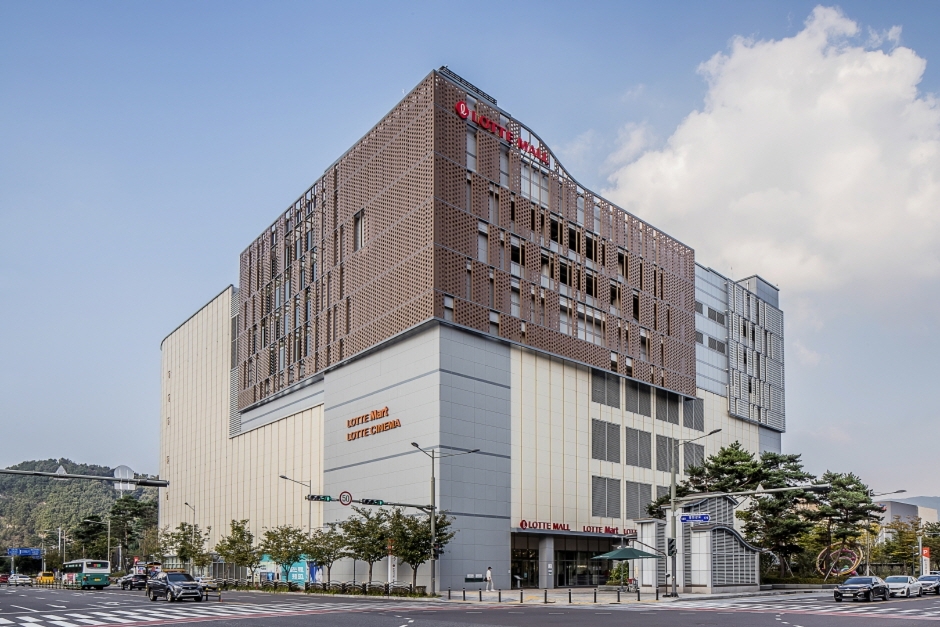Rogatis - Lotte Outlets Jinju Branch [Tax Refund Shop] (로가디스 롯데아울렛 진주점)
7.0Km 2024-04-23
440, Dongjin-ro, Jinju-si, Gyeongsangnam-do
-
LOTTE Shopping Mall – Jinju Branch (롯데몰 진주점)
7.0Km 2024-01-30
440 Dongjin-ro, Jinju-si, Gyeongsangnam-do
LOTTE Shopping Mall Jinju Branch provides new and enjoyable experiences every day. It is the first and largest complex shopping mall in Jinju Innovation City, which is the largest in the region, with wide and pleasant traffic lines, and easy and convenient parking.
Olive Young - Lotte Mall Jinju Branch [Tax Refund Shop] (올리브영 롯데몰진주점)
7.0Km 2024-06-27
1F, 440, Dongjin-ro, Jinju-si, Gyeongsangnam-do
-
Gangju Pond (강주연못)
7.1Km 2024-08-28
Yeha-ri, Jeongchon-myeon, Jinju-si, Gyeongsangnam-do
Gangju Pond is the orgin of the current Jinjuseong Fortress. It is unknown when the pond was first built, but the trees that grow around the pond are 500-600 years old, attesting to its history. During summer, the pond is filled with lotus blossoms, and it is a popular picnic location for students. The area around the pond was designated as an ecolocial park in 2004, creating a space for locals to relax and learn about the environment.
KAI Aerospace Museum (사천 항공우주박물관)
11.1Km 2024-02-23
78 Gongdan 1-ro, Sanam-myeon, Sacheon-si, Gyeongsangnam-do
KAI Aerospace Museum is dedicated to the preservation and exhibition of materials related to Korea's aerospace science. Its establishment aims to cultivate a proper historical perspective on national security while showcasing the technology and vision of the cutting-edge aerospace industry. Key facilities within the museum include the Freedom Hall, Aerospace Hall, Aviation Industry Hall, and an Outdoor Exhibition Hall. These exhibits not only provide valuable insights into the history of the aviation industry but also offer a glimpse into the future of the space industry.
Namsa Yedamchon Village (남사예담촌)
16.0Km 2024-10-23
10 Jirisan-daero 2897beon-gil, Danseong-myeon, Sancheong-gun, Gyeongsangnam-do
Namsa Yedamchon Village is situated at the foot of Jirisan Mountain. It is a traditional hanok village renowned for its history as the birthplace of accomplished scholars, adding to the region's rich scholarly tradition. This meticulously preserved village boasts ancient hanok houses, venerable trees, and historic walls. Beyond its significance as a center for traditional culture, the picturesque village also offers experiential programs, including the opportunity to wear hanbok and engage in traditional games.
Yedamwon (예담원)
16.0Km 2024-02-23
10-4 Jirisan-daero 2897beon-gil, Danseong-myeon, Sancheong-gun, Gyeongsangnam-do
Yedamwon is a traditional Korean restaurant situated in Namsa Yedamchon Village, near the entrance of Jirisan Mountain. The highlight of the menu, Maehwa jeongsik (maehwa set menu), features a delightful array of local dishes, including suyuk (boiled pork slices), saengseon gui (grilled fish), and dotorimuk muchim (acorn jelly salad). Renowned for its commitment to organically grown ingredients and the use of natural seasonings, such as green plum extract and gamsikcho (persimmon vinegar), the restaurant attracts numerous visitors seeking an authentic culinary experience.
Dasolsa Temple (다솔사)
16.0Km 2025-03-28
417 Dasolsa-gil, Sacheon-si, Gyeongsangnam-do
+82-55-853-0283
* Please be advised that this is located in one of the areas affected by the recent wildfire (as of March 27, 2025).
** For real-time wildfire information and emergency upates, visit the Korea Forestfire Information website and the National Disaster and Safety Portal.
Located on the hillside of Imyeongsan Mountain in Sacheon, Gyeongsangnam-do, Dasolsa Temple is a very old Buddhist temple built during the Silla dynasty. However, its buildings have been reconstructed as many as three times; once because of the Imjin War (1592-1598) and twice because of fire. The last fire took place in December of 1914, burning down all the buildings except Daeyangru Pavilion; therefore, most of the current buildings are historical representations of the buildings previously destroyed in the fire.
![Rogatis - Lotte Outlets Jinju Branch [Tax Refund Shop] (로가디스 롯데아울렛 진주점)](http://tong.visitkorea.or.kr/cms/resource/39/2886339_image2_1.jpg)


 English
English
 한국어
한국어 日本語
日本語 中文(简体)
中文(简体) Deutsch
Deutsch Français
Français Español
Español Русский
Русский